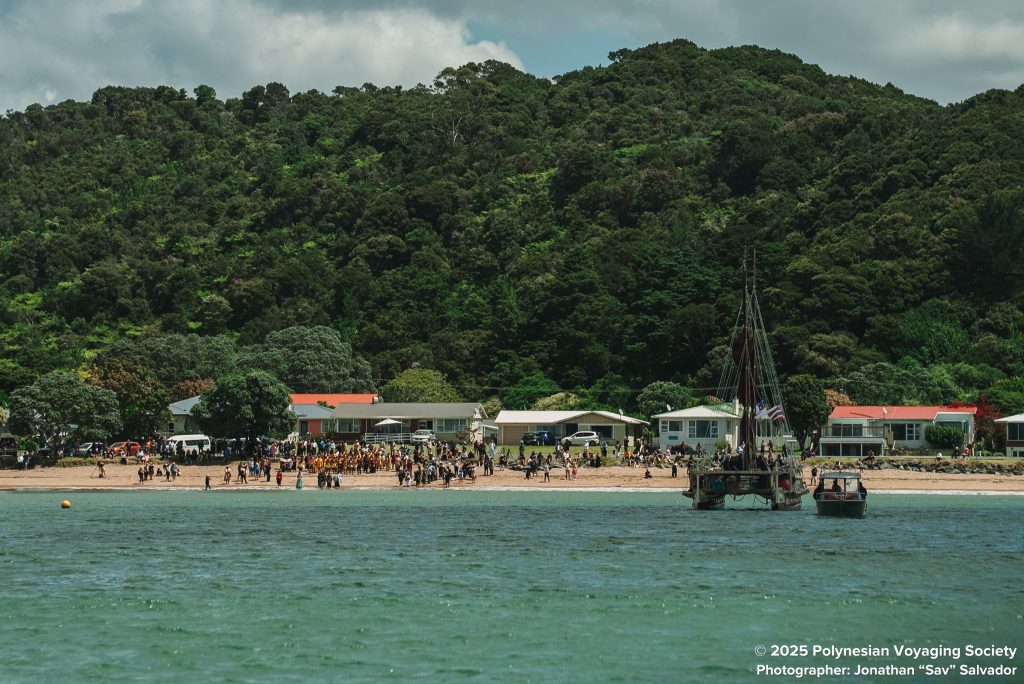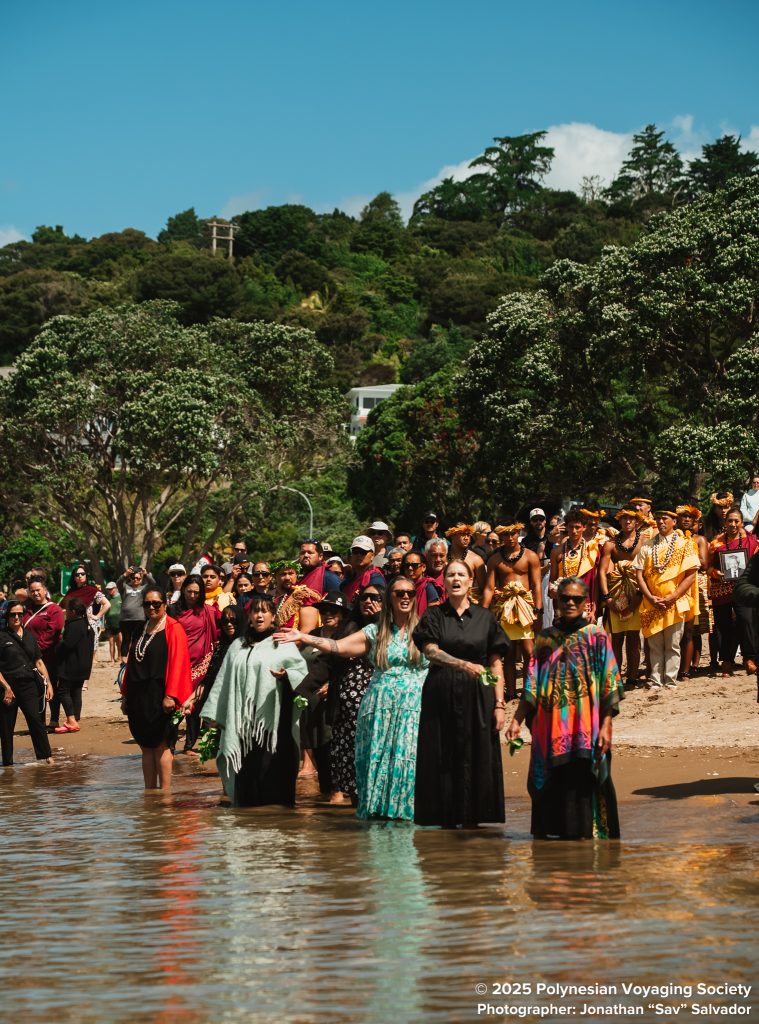Hōkūleʻa and Hikianalia crews arrive in New Zealand for 6-month stay

The crews of Hōkūleʻa and Hikianalia were officially welcomed back to Waitangi, the North Island of New Zealand, last week by Te Tiriti o Waitangi Marae and the Te Tai Tokerau communities.
The canoes arrived at Waitangi’s Te Tii Bay on Nov. 14, where they were greeted on the water by the famed Māori waka Ngā Toki Matawhaorua, the same war canoe that welcomed Hōkūleʻa during its historic first landfall in Aotearoa in 1985. That moment four decades ago marked the beginning of a powerful voyaging relationship between the Māori and Hawaiians, according to a news release from the Polynesian Voyaging Society.
Hōkūleʻa and Hikianalia departed Waitangi on Sunday and are expected to arrive in Auckland on Tuesday, continuing their Aotearoa engagements as part of the Moananuiākea Voyage.
Hōkūleʻa and Hikianalia will remain in Aotearoa for six months, which will allow the canoes to wait out the South Pacific hurricane season before continuing the Moananuiākea Voyage. During this time, the canoes will be hauled out for dry dock repairs and maintenance.
The current plan is also for Hōkūleʻa and Hikianalia to depart Aotearoa in April or May 2026, sailing on to Tonga, Samoa, and American Samoa, followed by Melanesia and Micronesia in the latter part of the year.
When Hōkūleʻa first made landfall in Aotearoa in 1985, the canoe was welcomed at Waitangi. That moment helped spark a Māori voyaging renaissance and forged a special kinship between Hawaiʻi and Aotearoa.
The Hawaii crew was bestowed the name Ngāti Ruawāhia by Sir James Tau Henare, leader of the time of Te Tii Marae. He declared the Hōkūleʻa crew as the “sixth tribe” of the Te Tai Tokerau region, similar to the five tribes who had arrived by canoe centuries before.
During their visit to the North Island last week, the crews were welcomed by traditional Māori chants and songs. In response, the Hōkūleʻa and Hikianalia crew offered “Auē Ua Hiti Ē,” a chant seeking permission to enter the land and acknowledging the hosts of the land.
Following the exchange of chants, the crew, Te Tai Tokerau community, and a delegation from Kamehameha Schools and Hawaiʻi formed a procession from the beach to Te Tiriti o Waitangi Marae for the pōwhiri, which included karakia (prayers), speeches, cultural performances, presentation of pōhaku, and an ʻawa ceremony.

Pōwhiri is a formal and sacred Māori welcoming ceremony that continues a 40-year relationship between Māori and Hawaiian voyagers, according to the voyaging society.
At sunrise on Nov. 15, a ceremony was held to unveil Mauipāikalani (“Maui-who-reaches-towards-the-heavens”), a new Hawaiian poupou (carved post) representing the Hawaiian tribe Ngāti Ruawāhia at Te Tou Rangatira, a sacred site with an impressive line-up of ancestral posts, and where Māori chiefs had gathered to discuss and sign treaties of consequence.
The first Hawaiian pou, Māuipāmaomao (“Maui-who-reaches-across-the-furthest-extremities”), carved of ʻōhiʻa by the late William Puou and erected in 1992, had stood for more than 30 years as a physical anchor for Hawaiians in Aotearoa. Weathered gently by time and the elements, it was ready to retire and return home to Hawaiʻi.
The new pou, Mauipāikalani, was created in classic Hawaiian design by carver Jordan Souza and assistant Kepano Carvalho over six days and nights at Kā Uri in Awanui. The kauri log used for the carving, gifted by the Hekenukumai Busby Trust, once belonged to the late Sir Hector Busby, a Pwo Navigator and architect of the Māori voyaging renaissance.
Tai Tokerau carvers Heemi Eruera and Billy Harrison, both closely tied to Sir Hector, prepared the log, supported the installation, and hosted the Hawaiian carvers during the creation of the pou.
Now standing among the pantheon of ancestral posts, Mauipāikalani is a symbol of Ngāti Ruawāhia and a promising future of unity and strength for Māori and Kānaka Maoli. Māuipāikalani will welcome Hawaiians who make the journey to the Far North for generations to come.
Following the unveiling, a commemorative ceremony marked 40 years since Hōkūleʻa’s 1985 landfall at Waitangi, a historic moment that ignited a resurgence of Māori voyaging and deepened bonds with Hawaiʻi. The tribute honored three leaders whose vision shaped this shared legacy: Sir James Henare, esteemed Māori elder; Sir Hector Busby, Pwo Navigator and Māori voyaging pioneer; and Myron “Pinky” Thompson, former PVS president and father of Nainoa Thompson.
Further details about the canoes’ schedule and community engagements in Aotearoa will be announced as they are confirmed. For the latest updates on the Polynesian Voyaging Society and the Moananuiākea Voyage, follow PVS’s social media: @hokuleacrew on Facebook and Instagram.
The live voyaging tracking map and updates can also be found at www.hokulea.com.



